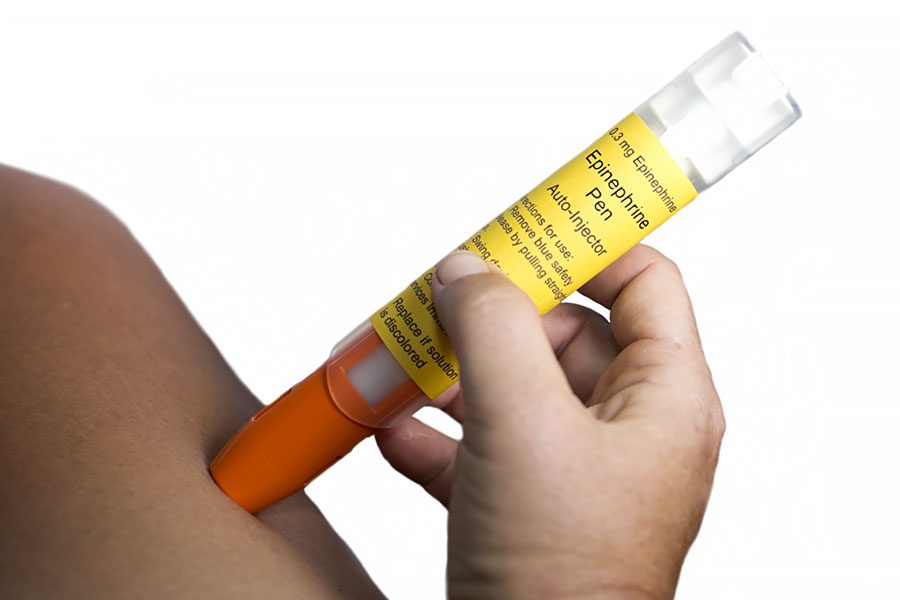Anaphylaxis is an allergic reaction that is serious and life-threatening. “The most common anaphylactic reactions are to foods, insect stings, medications and latex,” according to The American Academy of Allergy, Asthma & Immunology.(1) An epinephrine autoinjector is prescribed to prevent anaphylaxis. Serious allergic reactions and anaphylaxis are on the rise in the U.S., leading to a 2.3-fold increase in the number of emergency room visits between 2008 and 2016, reports a study published in The Journal of Allergy and Clinical Immunology.(2)
While there are different brands of epinephrine autoinjectors, they all include a needle to inject the medication, and all are single-use. People prescribed an autoinjector need to be trained to use the device before it is needed. Many allergy providers recommend that people have two autoinjectors readily available. “The reason for this is that more than one dose of epinephrine may be need to treat a more severe anaphylactic reaction of a second wave of symptoms.”(3) Autoinjectors should be carried to school, work, social events, when traveling, and dining out. Family and friends should know where the autoinjector is kept (for example in a purse or jacket pocket) and should know how to administer a dose.(3)
A study published in the Annals of Allergy, Asthma & Immunology reported on 917 people who had been prescribed epinephrine autoinjectors. A vast majority (89%) said they had filled their prescription for the autoinjector, but 45% said they did not have the autoinjector with them during their most severe allergic reaction. Another 21% said they did not know how to use the autoinjector.(4) Most of the study participants (69%) had had at least one allergic reaction the preceding year, and 39% had experienced multiple reactions.(5)
The study concluded that reducing out-of-pocket costs for autoinjectors, and increasing patient education, focused on self-efficacy, would improve compliance.(5) The American Academy of Allergy, Asthma & Immunology stresses that since now there are several brands of autoinjectors, patients need to be sure they were trained on the same autoinjector they were prescribed. “The stress of an anaphylactic reaction is not the time to realize you have a different autoinjector than what was demonstrated to you by your allergist,” the academy states.(6)
(1) American Academy of Allergy, Asthma & Immunology, Anaphylaxis Overview, https://www.aaaai.org/conditions-and-treatments/allergies/.
(2) American Academy of Allergy, Asthma & Immunology, Emergency Department Visits for Anaphylaxis Have Increased Since 2008, https://www.aaaai.org/
(3) Sicherer, S. M.D., UpToDate, Patient Education: Using an Epinephrine Autoinjector, https://www.uptodate.com/
(4) American College of Allergy, Asthma & Immunology, Majority of Adults Prescribed Epinephrine Report Not Using It In An Emergency, https://acaai.org/news/
(5) Warren, C. PhD. Zaslavsky, J. et. al., Annals of Allergy, Asthma & Immunology, Epinephrine Auto-Injector Carriage and Use Practices Among U.S, Children, Adolescents, and Adults, https://www.annallergy.org/
(6) The American Academy of Allergy, Asthma & Immunology, Make Sure You Receive the Epinephrine Autoinjector You Were Prescribed, https://www.aaaai.org/




